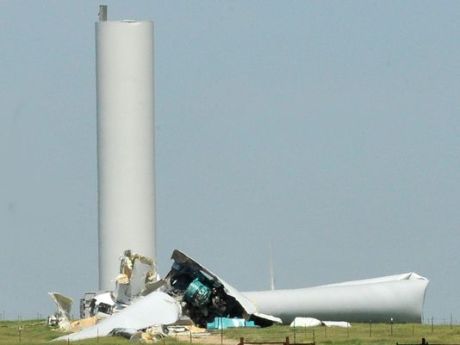Why Unreliable Wind & Solar Increase Power Prices?
by Rudy P. SysAdmin at howtofindthemoneyThe relationship between rocketing power prices and chaotically intermittent wind and solar is crystal clear. Let’s call it Germany, Denmark and South Australia, where wind and solar obsessions have driven power prices into orbit.
While RE zealots continue to chant the mantra that wind and solar are practically free, and getting cheaper all the time, the reality is that the cost of their collective chaos is born by the generation system as a whole, principally those readily dispatchable sources, coal, gas and nuclear.
As detailed by Tom Stacy and George Taylor in their study of the US experience (summarised below with the full paper linked below that) adding intermittent wind and solar to your grid is a guarantee of spiralling power prices.

The Levelized Cost of Electricity from Existing Generation Resources
Introduction
In this report, we analyze publicly available data to estimate the average levelized cost of electricity from existing generation resources (LCOE-Existing), as compared to the levelized cost of electricity from new generation resources (LCOE-New) that might replace them.
The additional information provided by LCOE-Existing presents a more complete picture of the generation choices available to the electric utility industry, policymakers, regulators and consumers.
What is the levelized cost of electricity? The Energy Information Administration (EIA) defines it as “the cost (in real dollars) of building and operating a generating plant over an assumed financial life and duty cycle.” But EIA’s Annual Energy Outlook and similar LCOE reports focus only on new generation resources, while ignoring the cost of electricity from existing generation resources.
If the economic lives of all generation resources matched their assumed financial lives, and no resource ever closed before the end of its economic life, then EIA’s approach would provide enough information to compare the costs of the available options.
Contrary to that assumption, the economic lives of existing generation resources exceed EIA’s assumed 30-year financial life. And environmental regulations on conventional generators—combined with the wholesale price suppression effect of mandates and subsidies for wind and solar resources and persistent low fuel prices for natural gas—have indeed forced existing coal and nuclear plants to close early. About 70 gigawatts of coal and nuclear generation capacity that could have been called upon on demand have retired since 2011.
Our report has two principal findings:
First: that, on average, continuing to operate existing natural gas, coal, nuclear and hydroelectric resources is far less costly than building and operating new plants to replace them. Existing coal-fired power plants, for example, can generate electricity at an average LCOE of $41 per megawatt-hour, whereas we project the LCOE of a new coal plant operating at a similar duty cycle to be $71 per MWh. Similarly, we estimate existing combined cycle (CC) gas power plants can generate electricity at an average LCOE of $36 per MWh, whereas we project the LCOE of a new CC gas plant to be $50 per MWh.
Second: is a calculation of the costs that non-dispatchable wind and solar generation resources impose on the dispatchable generation resources which are required to remain in service but are forced to generate less in combination with them. Non-dispatchable means that the level of output from wind and solar resources depends on factors beyond our control and cannot be relied upon to follow load fluctuations nor consistently perform during peak loads. Wind and solar resources increase the LCOE of dispatchable resources they cannot replace by reducing their utilization rates without reducing their fixed costs, resulting in a levelized fixed cost increase.
Our calculations estimate that the “imposed cost” of wind generation is about $24 per MWh (of wind generation) when we model the cost against new CC gas generation it might displace, and the imposed cost of solar generation is about $21 per MWh (of solar generation) when we model the CC and combustion turbine (CT) gas generation it might displace. The average LCOEs from existing coal ($41), CC gas ($36), nuclear ($33) and hydro ($38) resources are less than half the cost of new wind resources ($90) or new PV solar resources ($88.7) with imposed costs included.
The 10 largest coal producers and exporters in Indonesia:
Source: Stop These Things
Sponsor Ads
Created on Sep 5th 2019 01:55. Viewed 797 times.
Comments
No comment, be the first to comment.



